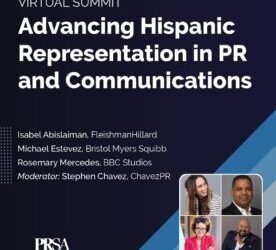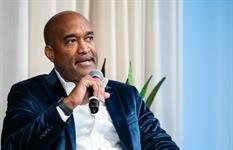
Putting human stories next to science resonates.
“You’ve heard a lot recently about Tylenol, also known by the generic name acetaminophen, and what effects it might have on unborn babies,” a blog post by Dr. Mary Nguyen, a fellow at the American Academy of Family Physicians and a mother of an autistic child, said on the organization’s patient information website, FamilyDoctor.org.
“Government officials suggested that taking Tylenol during pregnancy might be linked to autism, but medical associations, including the American Academy of Family Physicians and the American College of Obstetricians and Gynecologists, have pointed out that there’s no credible body of scientific evidence to back that.”
This article, labeled with the subheading “real stories by real family physicians,” addressed the medication’s safety, with sections about what Tylenol is, what the science-backed evidence shows and why acetaminophen is generally safe to consume while pregnant. This was written in plain, practical language with resources at the end of the post.
While it wasn’t a part of the organization’s initial media response, this blog post was one of the first ways AAFP provided an in-depth rebuttal to the accusations from government leaders this fall.
“That story was so important,” said Rebecca Fuller Beeler, Ph.D. and vice president of integrated marketing communications at AAFP, which represents more than 128,000 family physicians and medical students nationwide. “It wasn’t just about data. It was about a mom and a doctor speaking from experience. We know parents don’t make decisions wanting to harm their child. They’re trying to do the best for their families and we need to meet them there.”
Within hours of the claims and subsequent headlines, the organization’s communications team launched a coordinated, multi-channel response to counter the information and reassure worried parents with science-backed facts and empathy
“We knew it was going to spread fast because of who was saying it,” said “Our job was to get credible, compassionate information out there just as quickly.”
“The first thing we did was issue a clear media statement,” Beeler said. “Then we immediately sent resources to our family physicians, so they had credible, science-based materials ready if a patient or local reporter called them.”
People trust their own doctors, Beeler said. “The Edelman Trust Barometer showed that something like 84% of people trust their family physicians.”
So equipping AAFP doctors with the materials and the language to be able to speak with patients was really important, she said.
“They didn’t use jargon or technical terms, but very plain language. This was important,” Beeler said.
A ‘long-haul’ crisis strategy
As the situation continued to balloon, AAFP’s comms team pushed out updates through social media, physician interviews, op-eds and radio spots.
“There’s that first frontline message to combat the immediate falsehood,” Beeler said. “And then the second wave, getting our family physicians out there in interviews when the initial news cycle cools down, to reinforce trust in science and evidence.”
The organization held a panel discussion with doctors in a Q&A session, allowing concerned parents and others to candidly address issues. This was an open forum for worried or concerned parents to directly access the experts without barriers, Beeler said.
AAFP’s communications team leaned into social media and digital partnerships with content creators to share messages directly with families, including through LinkedIn live webinars.
“Instagram really performs well for us, especially when we collaborate with experts,” Beeler said. “We did joint Lives and Reels with an epidemiologist who explains science in very practical terms. Pairing her with local family physicians helped make the message relatable.”
View this post on Instagram
For parents of young children, AAFP found the most engagement on Facebook and Instagram, while targeted email newsletters and sponsored content were used for more niche audiences.
“Our (newsletter) audiences may be smaller, but they’re more engaged,” Beeler said. “It’s about quality over quantity.”
The organization also invested in satellite media tours to reach local news markets, especially in smaller communities that may not have access to national health experts. In the past six months, AAFP has completed four of these tours, including bilingual and Spanish-language versions.
“The AAFP’s satellite tour airings cumulative total reach was over 33 million and the web reach was almost 1.5 million,” Beeler said.
“Local communities still need access to credible experts,” she said. “We’ve partnered with pharmacists and pediatricians on some of these tours so that viewers see a united healthcare community, even if the broader world feels divided.”
Science, trust and humanity
Despite their success in reaching audiences through multiple channels, Beeler said the work takes a toll when it feels like comms teams are pushing out the same message over and over.
“There’s a weariness that sets in for us and for our audiences,” she said. “People are overwhelmed by information and sometimes tune out completely. That’s our challenge to keep cutting through the clutter in creative, compassionate ways.”
One major shift in healthcare comms since the pandemic is that messages about community protection, like “immunity for all,” don’t resonate as strongly as before, Beeler said.
“Now it’s about personal connection,” she said. “It’s about you and your kids, or you visiting your grandma. Helping people see how the science impacts them is what sticks.”
Courtney Blackann is a communications reporter. Connect with her on LinkedIn or email her at courtneyb@ragan.com.
The post How doctors used stories, science and social media to regain trust around Tylenol appeared first on PR Daily.















